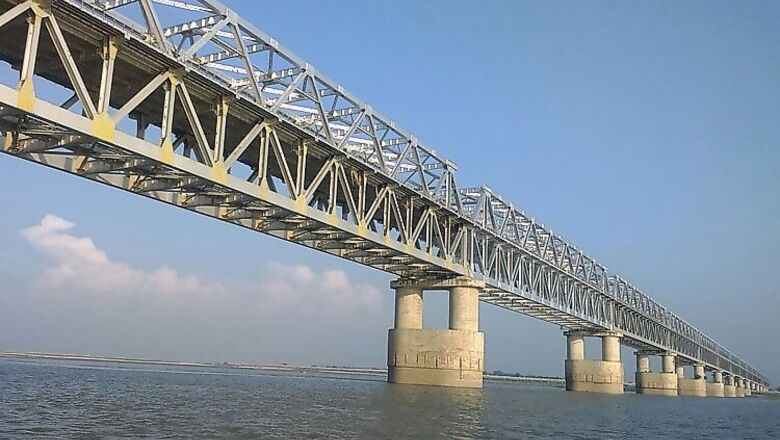
views
Munger: Ganga is considered the most sacred river of India by many. It not only has a long stretch, cutting through the northern and eastern part of the country; a large section of people consider it their lifeline too.
But what when crossing the Ganga out of compulsion, on daily basis, becomes essential for you to earn your livelihood? This is what the residents of villages near two major towns of eastern Bihar are going through currently. To earn their living, they need to cross the river onboard ferries that have nothing more than wooden benches for travelers to sit.
There is no direct road link between two major trade hubs of the state - Munger and Begusarai. The shortest possible road distance between the towns currently is 160 km, with state transport buses plying on them on the circuitous route.
Due to heavy traffic on them, the travel time is almost five hours. So many prefer crossing the river on boats and steamers as then the distance between the two towns can be covered in the shortest possible time.
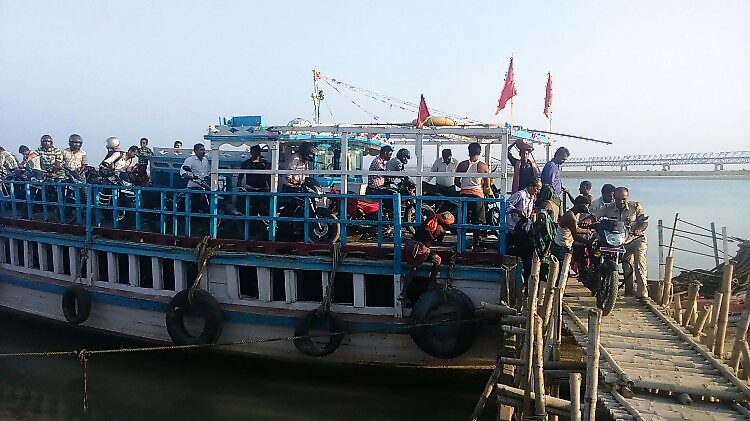
It’s not that this issue has not been felt necessary earlier. A bridge is in fact being constructed over the river, and it’s not a simple one. It is in fact a mega rail-road bridge, reportedly the third largest in the country with a length of 3190 metres.
The bridge at Munger along with another one coming up at Digha is extremely essential for the state as Bihar has just one bridge over Ganga, which is the Mahatma Gandhi Setu in Patna.
But Mahatma Gandhi Setu, which is 5,575 metres long and opened in May 1982 and it is one of the longest river bridges has been undergoing repair for the last several years as a few of its spans are damaged. There are heavy traffic jams on the bridge which connects Patna on the southern bank of Ganga with Hajipur on the other side.
The rail-road bridge will cost about Rs 2,363 crore with the railways share at Rs 1,247 crore and Bihar government to provide Rs 1,116 crore, respectively. Once completed, Sahebpur Kamal station in the north and Jamalpur station in the south end will be connected.
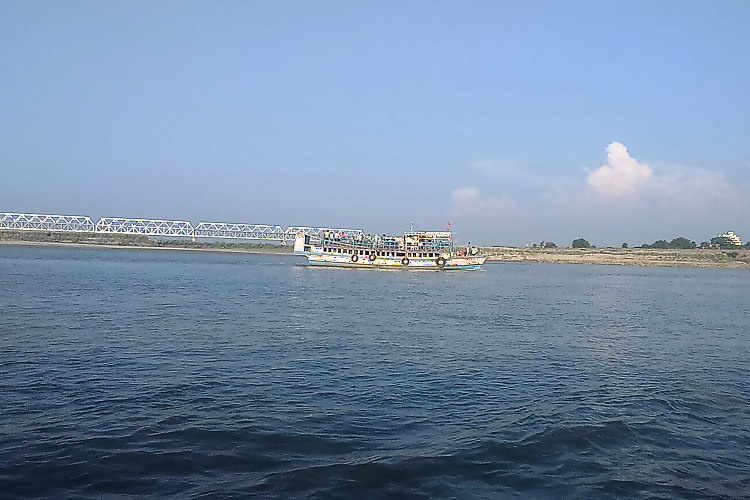
It is understandable that such huge construction takes time, but in this case, the delay has been much than usual and residents of Munger, Begusarai and other nearby areas are forced to either take the long road route or cross the river on boats and steamers.
Locals told IBNLive that the construction of the bridge started almost 10 years ago, and the process of it commenced when current Bihar Chief Minister Nitish Kumar was the union railways minister under the then prime minister Atal Bihari Vajpayee.
Though they are hopeful of using the bridge in the next one year, continuing without it is certainly a tough ask for many. One can reach the steamer at the side of Munger on a cycle rickshaw, following which a brief walk is needed to reach the point of starting the travel.
Several local commuters, including those on bicycles and motorbikes avail the ferry service at a cost of Rs 20 one way. It may sound a meager amount to many, but those who earn their livelihood daily, it’s almost one fourth of their earning.
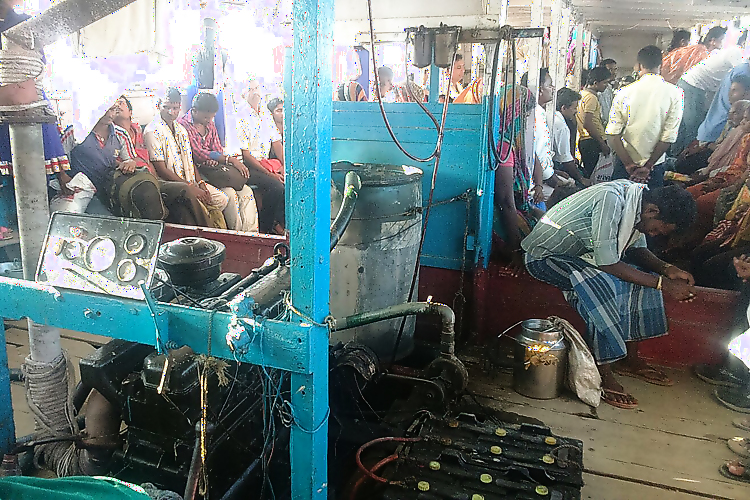
“We do not have option but to buy the tickets daily. Munger is an important market place, and also the place for official work such as courts, we cannot afford to not travel,” said Bijay Mandal, who is employed in Munger but lives in a village on the other side of the river.
Mandal is not the only one who faces this ordeal. It is shared by several others who have accepted the commute across the river as a part of life.
According to Pankaj Kumar Yadav, who needs to visit the market in Munger daily, “Once the rail-road bridge is thrown open, I can even walk down to my home from Munger. It will take me not more than 30-40 minutes, but help me save almost Rs 800-1000 every month.”
When asked if any of the candidates contesting the Assembly elections have spoken or given any assurance about the issue, he added, “You mean this election? Nothing has been talked about it in the last 10 years. But we do not want to crib about it, as it will only discourage us further.”
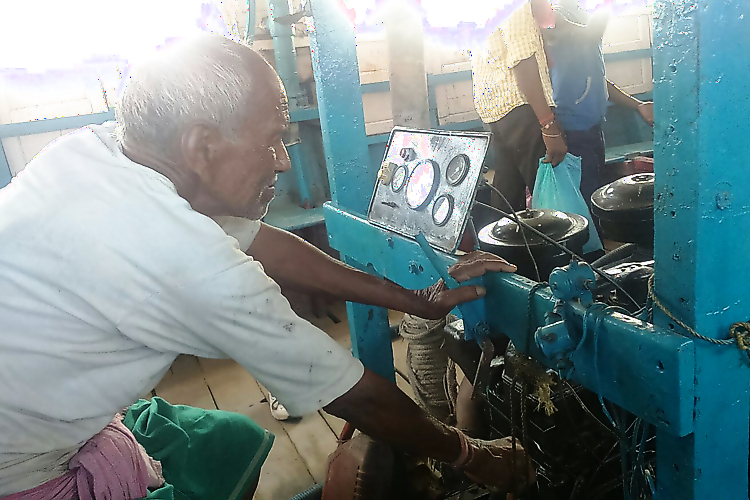
Moreover, the condition of the steamers cannot be categorised as good in any ways. It functions with the help of generator pump set and a couple of batteries, which can simply not be considered close to a state-of-art motor-boat.
That is not all. The situation is worse on the other side of the river.
After de-boarding the boat, one needs to walk at least 1.5 km to get a horse cart (popularly known as ‘tam-tam’ in the region), or a seat in an auto-rickshaw if lucky. The auto-rickshaws in the area are six-seater, but ferry at least double the number of passengers.
Following this, the auto-rickshaws, or the horse carts, cross through one village after another, which are deprived of basic facilities like concrete roads, to reach a point on the highway leading to the nearest big town – Begusarai.
The completion of bridge was reportedly stalled initially over land acquisition issue in the region. But by the time the issue got resolved, the political will to ensure its completion seems to have faded with time.
Hopefully, the wait of thousands of people in the area will end in the next 12 months.











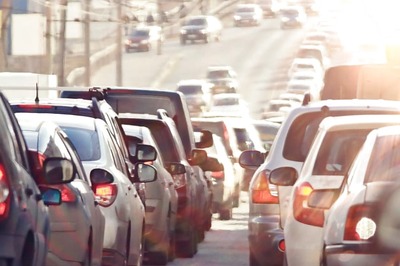








Comments
0 comment